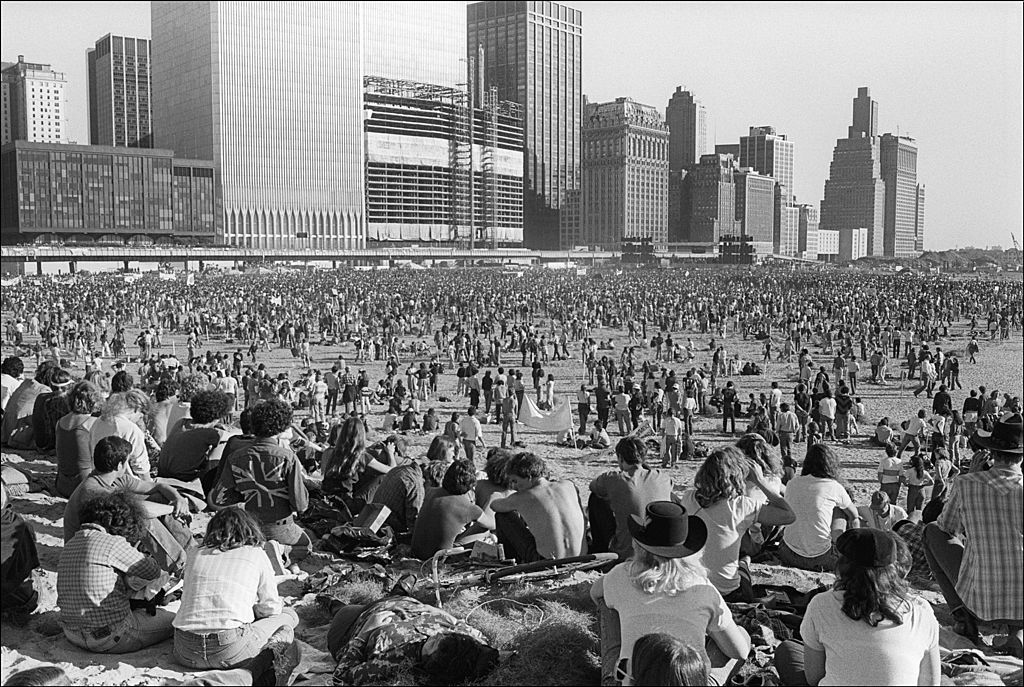Not long ago, a jaw-dropping image flashed across my phone screen – a breathtaking shot of the Twin Towers in Manhattan, with a stunning beach right in the foreground.
People were lounging in the sand, as if they were on a tropical paradise. But could this really be true?
New York City’s forgotten beach oasis
Today, if you stroll along the waters near Battery Park, in the vicinity of where the Twin Towers once stood, it’s nearly impossible to imagine that a beach once stretched along the shore.
Now, the area is lined with sleek buildings and bustling streets, with the sound of the city filling the air. The water laps quietly against a modern promenade, offering views of the Statue of Liberty in the distance.
Not long ago, a jaw-dropping image flashed across my phone screen – a breathtaking shot of the Twin Towers in Manhattan, with a stunning beach right in the foreground.
People were lounging in the sand, as if they were on a tropical paradise. But could this really be true?
New York City’s forgotten beach oasis
Today, if you stroll along the waters near Battery Park, in the vicinity of where the Twin Towers once stood, it’s nearly impossible to imagine that a beach once stretched along the shore.
Now, the area is lined with sleek buildings and bustling streets, with the sound of the city filling the air. The water laps quietly against a modern promenade, offering views of the Statue of Liberty in the distance.

But the truth is, people once sunbathed here, basking in the warmth of the sun and the shadows of the World Trade Center. A forgotten beach oasis with its very own sandy shoreline, where the bustle of the city seemed worlds away, and the waters of Manhattan’s harbor embraced those seeking a rare slice of tranquility.
But, this sandy haven wasn’t part of any grand plan – it was an accidental oasis born from the construction delays of the World Trade Center in the mid-1970s.
Wasn’t meant for public use
As the massive foundation for the Twin Towers took shape, workers excavated earth from the nearby basin, creating a temporary beach along the waterfront.
Though it wasn’t meant for public use, Manhattanites quickly claimed it as their own, turning it into an unexpected retreat. Sunbathers lounged in the warm glow of the sun, volleyball games popped up in the sand, and readers found their peaceful spot by the water, all under the towering shadow of the World Trade Center.
What was once a construction site became a hidden gem and the stretch of sand became known as Battery Park Beach.
Incredibly, there are still people who remember what it was like to bathe on that beach — one of them being Suellen Epstein. Growing up in the nearby Tribeca neighborhood, she’s the one in the picture below, soaking up the summer sun in 1977.
In an interview with Tribeca Citizen, Suellen shared her memories of the beach, noting that the sand wasn’t exactly the soft, fine kind you’d find on a tropical shore. The sand was a bit rough, and of course, it was never kissed by the ocean waves.
But hey, it did the trick.
“We didn’t have resources to go out to the Hamptons,” Suellen told Tribeca Citizen and continued: “We were out there on the beach any sunny Sunday – as long as it wasn’t wet. It was a great place to get through the whole Sunday times.”
In the photo above, Suellen and her boyfriend enjoyed a rare moment of solitude. On the day the Times shot was taken, the beach was completely theirs.
”You felt like you weren’t in the city – like it was the Manhattan countryside,” Suellen recalled.
Hosting the largest anti-nuclear rally in history
The ”acres and acres of landfill” that eventually became the beach didn’t just serve as a peaceful retreat — it also became a powerful stage for social change. One iconic black-and-white photo, taken on September 23, 1979, captures a sandy no-man’s-land transformed into the heart of a massive anti-nuclear rally.
Hundreds of people sat in the sand, soaking in the sunny skies, free music, and a wave of controversy that drew 200,000 to the tip of Manhattan for what would become the largest anti-nuclear, pro-solar rally in history.

It wasn’t just the crowd that made the day unforgettable; the beach was packed with celebrities lending their voices to the cause. Folks like Pete Seeger and Jackson Browne performed, while Jane Fonda delivered a passionate speech.
The rally marked a rebirth of the national protest movement, which had largely faded after the end of the Vietnam War in 1975.
Now, the cause was nuclear power, and the catalyst for this renewed energy was the nuclear accident in Harrisburg earlier that year.
Striking installations
The Battery Park Beach, or Tribeca Beach, also served as a dynamic creative stage, alive with performances and artistic energy. Lots of small dance companies were thriving, and artists could actually afford to live and create in the city. Around that time, the public arts organization Creative Time received a grant to bring art to the beach, including a striking installation by local environmental artist Mary Miss.
In 1980, the beach became the stage for Art on the Beach, offering a unique opportunity for young sculptor Nancy Rubins to make her mark on this special location. At 27 years old, she was in awe of the massive scale of the site and the engineering behind it. She contributed a piece fashioned from discarded items like lampshades, hoses, and small appliances, which she sourced in bulk from various Goodwills.
Her creation ultimately became a 45-foot-tall tornado of junk.
“It was very humbling to work at that site. I was young, and it was so huge,” she told The New York Times.





